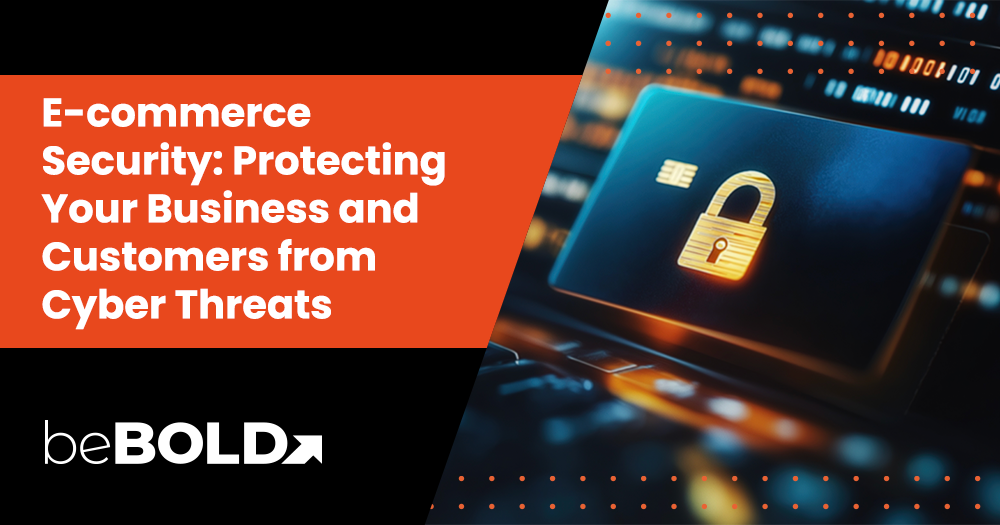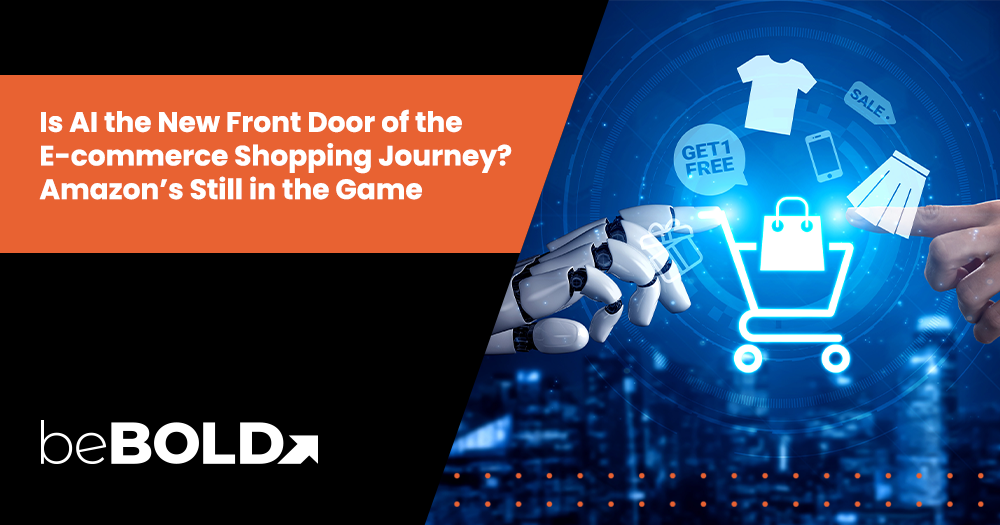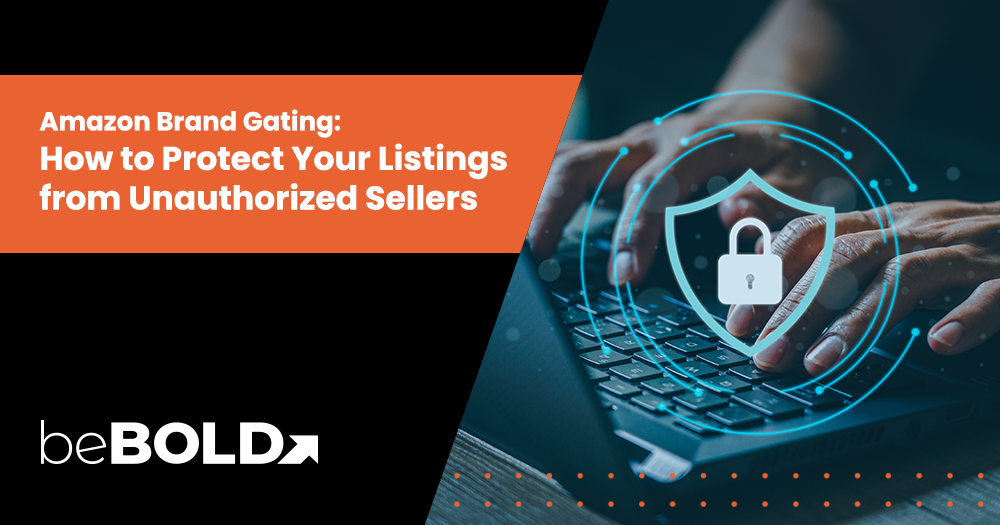Key Highlights
- E-commerce sites are prime hacker targets—one breach can cost millions and erase customer trust.
- Real threats like phishing, DDoS, malware, and SQL injections attack your site daily.
- Defense essentials include SSL certificates, web application firewalls (WAFs), multi-factor authentication (MFA), secure gateways, and regular security audits.
- Stay compliant with PCI-DSS, GDPR, and CCPA—it’s not just legal, it’s vital for building customer trust.
- Your team is your biggest risk and your strongest defense—train employees and educate customers to reduce human error.
- Learn from Target’s $200 million breach—third-party vendor access and poor segmentation can wreck your business.
- AI, blockchain, biometrics, and zero-trust architectures are shaping the future of ecommerce security.
- Security isn’t a backend task—it’s a revenue protector and growth multiplier. Partner with BeBold Digital to strengthen your security foundation.
Ecommerce security is essential in today’s digital landscape. As more customer data is shared online, cyber threats are growing. A single breach can harm your brand, cost you money, and break customer trust. This guide covers the main threats, protection strategies, compliance basics, and future trends to help your business stay secure and succeed online.
Common Cyber Threats to E-commerce Websites

E-commerce websites are frequently targeted by cybercriminals due to the valuable and sensitive customer data they hold. Threats such as phishing, malware, DDoS attacks, and SQL injections can cause significant damage, from financial losses to reputation harm, and ultimately lead to a loss of customer trust. Below are some common cybersecurity threats and ways to mitigate them:
1. Phishing attacks target employees and customers
Phishing attacks can trick employees and customers into revealing sensitive information, leading to serious security breaches.
- Cybercriminals use deceptive emails or messages to trick individuals into revealing sensitive information like login credentials or financial data.
- Phishing attacks target both employees and customers, potentially leading to security breaches and financial losses.
- To prevent phishing, implement robust security measures, conduct regular employee training, and raise awareness about common phishing tactics.
2. Malware infections compromising website functionality
Malware can infiltrate e-commerce websites, disrupting functionality and compromising sensitive data.
- Malware, including viruses, trojans, ransomware, and spyware, can severely damage an e-commerce website’s infrastructure and steal sensitive data.
- Such infections may lock out users or damage systems unless a ransom is paid.
- Protect against malware by regularly updating antivirus software, firewalls, and educating employees about safe browsing practices and the risks of clicking on suspicious links.
3. Distributed Denial of Service (DDoS) attacks disrupting services
DDoS attacks overwhelm a website’s infrastructure, causing slowdowns or complete outages, negatively affecting customer engagement and experience, and revenue.
- DDoS attacks overwhelm a website’s infrastructure with traffic from compromised devices, causing downtime or complete service outages.
- The consequences include lost revenue, frustrated customers, and extended periods of downtime.
- Mitigate DDoS attacks by employing traffic filtering, scaling resources, and using protection services like Cloudflare to ensure uninterrupted service.
4. SQL injection attacks leading to data breaches
SQL injection attacks can expose sensitive data by exploiting vulnerabilities in a website's database.
- SQL injection occurs when malicious queries are used to access and alter sensitive data stored in a website's database.
- This type of attack can lead to the exposure of customer information such as names, addresses, and payment details.
- Protect against SQL injections by validating user inputs, using parameterized queries, and leveraging database security tools that can detect and block potential threats.
Essential Security Measures for E-commerce Websites

With the surge in cyber threats, securing your e-commerce site is no longer optional—it’s essential. From choosing the right platform to regularly backing up your data, each security measure plays a vital role in protecting your business and customer trust. Here’s a breakdown of the key defenses every e-commerce site should implement:
1. Secure E-commerce Platform
Your platform and hosting provider form the foundation of your online store’s security. Here’s how you can secure it
- Choose a platform with built-in PCI compliance, SSL support, and regular security updates.
- Look for features like multi-factor authentication (MFA) and auto-patching for vulnerabilities.
- Consider scalability, user-friendliness, and the platform’s track record for security.
- A secure platform ensures both protection and a seamless customer experience.
2. SSL Certificates
SSL certificates encrypt data in transit and build instant trust with site visitors. Here’s what you need to do.
- Establish a secure, encrypted connection between your site and users’ browsers.
- Protect sensitive data like credit card numbers and personal information from interception.
- Improve search engine rankings and show visible trust signals like the padlock icon.
- Essential for PCI compliance and securing your site’s reputation.
3. Payment Gateway Security
A reliable payment gateway protects sensitive financial information during transactions. Here’s what you need to know.
- Ensure PCI compliance to safeguard credit card transactions.
- Use encryption to prevent data interception during processing.
- Implement tokenization so actual card data is never stored or transmitted.
- Builds consumer confidence and reduces liability from potential fraud.
4. Multi-Factor Authentication (MFA)
MFA adds a powerful extra layer of protection to user and admin accounts. Here’s more on it.
- Requires a second form of authentication beyond just a password.
- Can include SMS/email codes, biometrics, or authentication apps.
- Reduces risk of unauthorized account access due to compromised credentials.
- Boosts customer confidence in your site’s commitment to security.
5. Regular Security Audits
Routine audits identify and address vulnerabilities before attackers can exploit them. Here’s what you need to do.
- Conduct comprehensive checks on code, plugins, and system configurations.
- Detect and fix security flaws early to avoid breaches.
- Ensure ongoing compliance with standards like PCI-DSS.
- Reinforce customer trust and maintain a secure environment.
6. Web Application Firewalls (WAF)
WAFs filter out malicious traffic before it ever reaches your site. Here’s what you need to know.
- Protect against common threats like SQL injections, XSS, and DDoS attacks.
- Analyze and block suspicious data flows between users and your site.
- Help prevent service interruptions and data leaks.
- A strong WAF is critical for maintaining uptime and shielding customer data.
7. Content Delivery Networks (CDNs)
CDNs improve performance while doubling as a line of defense against cyberattacks. More on it here.
- Distribute site traffic across global servers to prevent overload.
- Help absorb and mitigate DDoS attacks.
- Often include built-in features like firewalls and bot filters.
- Enhance both speed and security for users across different regions.
8. Data Backup Solutions
Even with strong defenses, having a recovery plan is non-negotiable. Here’s how to protect the data.
- Regularly back up your data to prepare for potential data loss.
- Quickly restore site functionality after cyberattacks, system failures, or human errors.
- Minimize downtime and avoid prolonged disruptions to your business.
- Critical for business continuity and customer reassurance.
By implementing these layered security measures, e-commerce businesses can drastically reduce their vulnerability to cyber threats and build lasting customer trust.
How To Comply With Security Standards?
Complying with data protection and payment security standards is no longer just a best practice—it’s a legal and ethical requirement for any e-commerce business.
Whether you’re processing credit card payments or collecting customer information, adherence to regulations like PCI-DSS and GDPR is crucial. These standards are designed to ensure responsible data handling, protect user privacy, and minimize the risk of costly breaches and penalties.
Below, we break down the essential compliance requirements that every e-commerce business should prioritize to stay secure and trustworthy.
PCI-DSS Compliance
PCI-DSS sets the benchmark for securing payment card transactions and safeguarding sensitive financial data.
- Requires encryption of stored and transmitted credit card data to prevent unauthorized access
- Enforces access controls to ensure only authorized personnel can handle payment information.
- Mandates secure network configurations, firewalls, and regular vulnerability scans.
- Demonstrates your commitment to safe transactions and reduces the risk of credit card fraud.
- Essential for any business handling debit or credit card payments, regardless of size.
GDPR and Other Regulations
Data privacy regulations like GDPR and CCPA govern how businesses collect, store, and use personal information.
- GDPR mandates transparency in data handling, customer consent, and the right to data access or deletion.
- Non-compliance with GDPR can lead to fines of up to €20 million or 4% of annual global turnover.
- U.S.-based laws like the CCPA give California residents similar control over their personal data.
- These laws apply to any business that handles data from residents of those regions, regardless of your location.
- Compliance builds consumer trust and reflects your brand’s dedication to privacy and transparency.
By proactively aligning with both PCI-DSS and regional data privacy regulations, e-commerce businesses not only avoid legal and financial consequences but also earn long-term customer loyalty by demonstrating integrity and accountability in their operations.
Educating Employees and Customers
Security isn’t just about firewalls and encryption—it’s also about people. Employees and customers are often the first line of defense against cyber threats, whether it's recognizing a phishing attempt or practicing secure behavior online. That’s why building awareness through consistent education and communication is just as vital as investing in technical safeguards.
Below, we break down how training your team and informing your customers can turn them into active participants in your e-commerce security strategy.
Employee Training
Your staff handles critical data daily, making them prime targets for cybercriminals—and key players in your defense strategy.
- Offer ongoing cybersecurity training to keep employees informed about evolving threats and best practices.
- Use simulated phishing attacks to test recognition skills and reinforce caution.
- Emphasize the use of strong, unique passwords and enable multi-factor authentication for all accounts.
- Encourage regular software updates and stress the risks of outdated systems.
- Create a culture where security is part of everyday operations—not just IT’s responsibility.
Customer Awareness
Empowering your customers with knowledge builds trust and strengthens your overall security posture.
- Clearly communicate your data collection and privacy policies to ensure transparency.
- Provide tips for creating secure passwords and securing their personal accounts.
- Remind users to regularly review and update their login credentials and account information.
- Share updates or alerts about common scams or phishing tactics targeting shoppers.
- Reinforce your brand’s commitment to safe shopping through visible education efforts.
When both employees and customers are well-informed and engaged, your e-commerce business becomes significantly more resilient to cyber threats—making awareness an essential part of your security strategy.
Case Studies of Security Breaches
Case Study 1: Target Data Breach (2013)
Overview:

In late 2013, Target Corporation experienced a massive data breach that compromised the credit and debit card information of approximately 40 million customers. Additionally, personal information of about 70 million individuals, including names, addresses, phone numbers, and email addresses, was exposed.
How the Breach Occurred:
- Attackers gained access through credentials stolen from a third-party HVAC vendor, Fazio Mechanical Services.
- Once inside, they moved laterally within Target's network due to inadequate network segmentation.
- Malware was installed on point-of-sale (POS) systems to capture payment card data during transactions.
Consequences:
- Financial losses exceeded $200 million, including settlements and legal fees.
- Target faced over 140 lawsuits and settled for $18.5 million with 47 states and the District of Columbia.
- The company's reputation suffered significantly, leading to a 46% drop in profits in Q4 2013.
Lessons Learned:
- Implement strict access controls for third-party vendors.
- Ensure proper network segmentation to prevent lateral movement by attackers.
- Regularly monitor and respond promptly to security alerts.
Sources:
Case Study 2: Equifax Data Breach (2017)

Overview:
In 2017, Equifax, one of the largest credit reporting agencies, suffered a data breach that exposed personal information of approximately 147 million individuals, including Social Security numbers, birth dates, addresses, and, in some cases, driver's license and credit card numbers.
How the Breach Occurred:
- Attackers exploited a known vulnerability (CVE-2017-5638) in the Apache Struts web application framework used by Equifax.
- Despite a patch being available, Equifax failed to apply it in a timely manner.
- Sensitive data was not adequately encrypted, making it accessible once the attackers breached the system.
Consequences:
- Equifax agreed to a settlement of up to $700 million with the Federal Trade Commission (FTC), the Consumer Financial Protection Bureau (CFPB), and 50 U.S. states and territories.
- The company's CEO, CIO, and CSO resigned in the aftermath of the breach.
- Equifax's reputation suffered, and it faced numerous lawsuits and regulatory investigations.
Lessons Learned:
- Timely application of security patches is critical.
- Encrypt sensitive data to protect it even if systems are compromised.
- Maintain transparency and prompt communication with stakeholders during a breach.
Sources:
What are the Future Trends in E-commerce Security?
As cyber threats become more complex and persistent, e-commerce security is entering a new era shaped by innovation, automation, and user-centric protection. Businesses are now focusing not just on reactive defense, but on proactive, predictive technologies that minimize risks before they materialize. Similarly, tools like Brand Analytics for sales strategy help sellers anticipate customer behavior and market trends, enabling data-driven decisions that strengthen both security and business performance.
Future-proofing your online store means understanding the direction cybersecurity is heading — and integrating emerging solutions today to avoid tomorrow’s pitfalls.
Here are the key trends redefining the future of e-commerce security:
Artificial Intelligence & Machine Learning (AI/ML)
AI and ML are rapidly becoming foundational tools in the fight against cybercrime.
Why it matters:
- These technologies detect anomalies in real time and adapt to new attack patterns without manual updates.
- They significantly reduce incident response time and false positives.
Key Stats:
- According to IBM, organizations using AI/ML for cybersecurity reduce breach lifecycle costs by up to $1.76 million.
- Gartner predicts that by 2026, 75% of organizations will rely on AI-driven security operations to handle threat detection and mitigation.
Applications:
- Behavioral analytics to flag abnormal user actions.
- Automated response systems that contain threats without human input.
- Fraud detection for transactions and new account creations.
Sources:
Blockchain for Transaction Security
Blockchain is poised to transform the integrity of ecommerce transactions through transparency and decentralization.
Why it matters:
- Transactions are recorded in immutable ledgers, drastically reducing the chances of fraud.
- Decentralized systems reduce single points of failure and improve trust among users.
Key Stats:
- A Deloitte study found that 45% of consumers trust blockchain for secure payment transactions.
- By 2030, blockchain is expected to contribute over $1.76 trillion to global GDP, much of it through secure digital infrastructure.
Applications:
- Smart contracts that automatically verify and execute secure transactions.
- Tokenization of customer data to protect personally identifiable information (PII).
- Auditable transaction trails for regulatory compliance.
Sources:
Biometric Authentication
Passwords alone are no longer enough — biometrics bring security closer to the user.
Why it matters:
- Biometrics like fingerprint scans, facial recognition, or retina scans offer a much higher degree of identity assurance.
- They reduce reliance on easily-compromised credentials and minimize phishing success rates.
Key Stats:
- Juniper Research estimates that biometric authentication will secure over 18 billion e-commerce transactions annually by 2025.
- 90% of organizations believe biometric solutions are more secure than traditional authentication methods.
Applications:
- Passwordless logins using facial or fingerprint recognition.
- Biometric-backed multi-factor authentication (MFA) for added layers of defense.
- Reduced fraud in mobile payments and app-based purchases.
Sources:
Cloud-Native Security Solutions
As more ecommerce platforms migrate to the cloud, cloud-native security is becoming essential.
Why it matters:
- Scalable, integrated security systems are more effective at detecting and responding to threats in dynamic environments.
- Cloud-based tools offer automatic updates and 24/7 threat monitoring.
Applications:
- Cloud access security brokers (CASBs) that control data flows between devices and cloud environments.
- Zero Trust architectures that verify every user and device.
- Secure APIs that protect backend ecommerce functionality.
Sources:
Proactive Regulatory Compliance and Privacy-by-Design
Future security strategies will need to be compliance-first and user-focused from the ground up.
Why it matters:
- With evolving laws like GDPR, CCPA, and the upcoming AI Act in the EU, businesses must embed privacy principles directly into system design.
- Proactively managing compliance helps avoid fines and build long-term trust.
Applications:
- Real-time compliance monitoring using AI-driven audits.
- Consent-first data collection frameworks.
- Customer-facing privacy dashboards that increase transparency.
Sources:
BeBOLD Digital: Powering Your Brand's Growth on Amazon
beBOLD Digital helps brands grow and succeed on Amazon through expert marketing services. We specialize in listing optimization, Amazon SEO, sponsored ads (PPC), A+ content, brand store setup, and review management. Our approach to Amazon PPC optimization ensures your ad spend is strategically allocated to maximize visibility, clicks, and conversions while maintaining a healthy ACoS.
Our team combines data-driven strategies with compelling content to increase visibility, conversions, and ROI. Whether you're launching a new product or scaling your brand, we deliver results that matter—higher rankings, stronger engagement, and better sales performance.
Ready to grow on Amazon? Book a call now!
Conclusion
Ecommerce security is essential for any business, regardless of size or platform. Investing in measures like SSL certificates, secure payment gateways, regular audits, data backups, and employee training is a must. Staying informed about cyber threats, security trends, and updates ensures ongoing protection. Compliance with standards like PCI-DSS and GDPR builds customer trust and legal adherence. Educating employees and customers on cybersecurity best practices further strengthens your security posture. Ultimately, securing sensitive data protects your brand, fosters loyalty, and ensures safe online transactions.
Frequently Asked Questions
What are the most common security threats to e-commerce websites?
The most common security threats for ecommerce websites include phishing attacks targeting employees and customers, malware infections compromising site functionality, Distributed Denial of Service (DDoS) attacks disrupting services, and SQL injection attacks leading to data breaches, ultimately affecting sensitive payment information.
How can I ensure my e-commerce website is PCI-DSS compliant?
Implementing PCI-DSS compliance involves securing payment card data through encryption, regular monitoring, and maintaining a secure network. Conducting vulnerability scans and assessments, along with ensuring strong access control measures, are crucial steps to ensure your e-commerce website meets PCI-DSS requirements.
What steps can small e-commerce businesses take to improve website security?
Small ecommerce stores can enhance their website security by choosing a secure ecommerce platform, securing SSL certificates, installing reliable payment gateway security, conducting regular security audits, and implementing robust security measures like Multi-Factor Authentication (MFA), Web Application Firewalls (WAF), and data backup solutions.
How often should I perform security audits on my e-commerce website?
Security audits should be performed regularly on an ecommerce website, preferably every quarter. However, the frequency of audits may increase depending on the scale and complexity of your ecommerce platform, as well as any identified threats or detected anomalies.
Protect your e-commerce business with cutting-edge security solutions. Stay secure, stay ahead—partner with beBold Digital today!









Comments